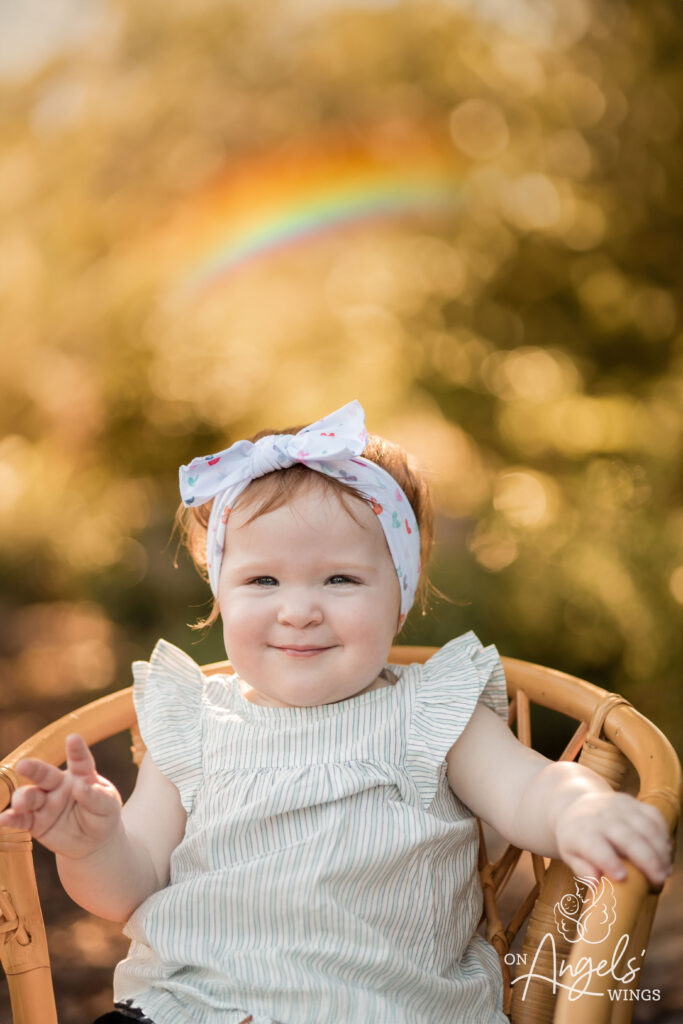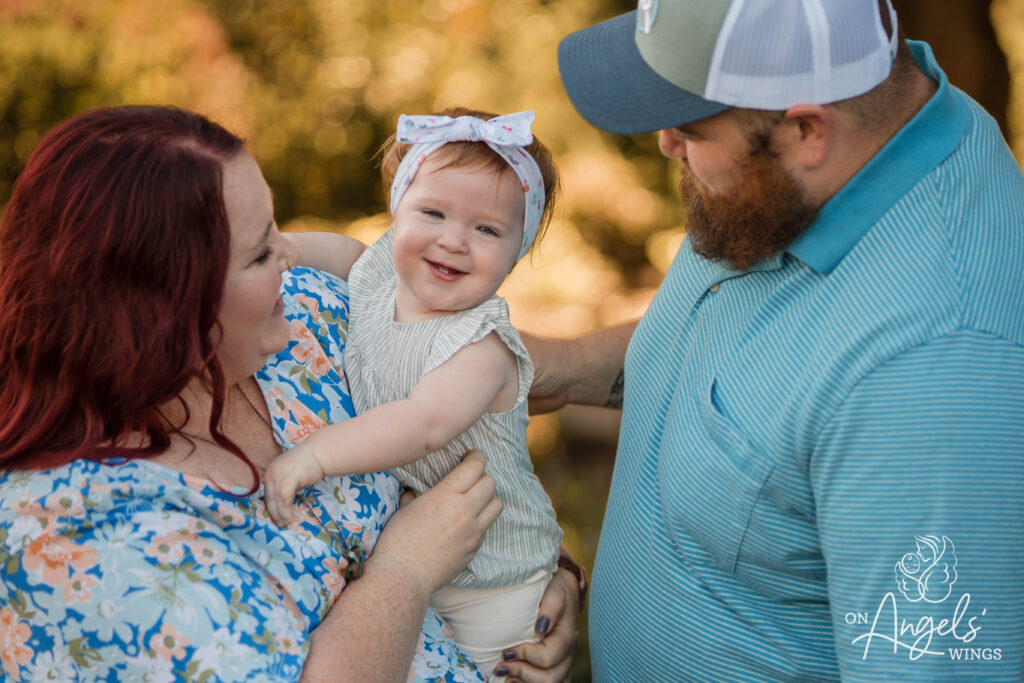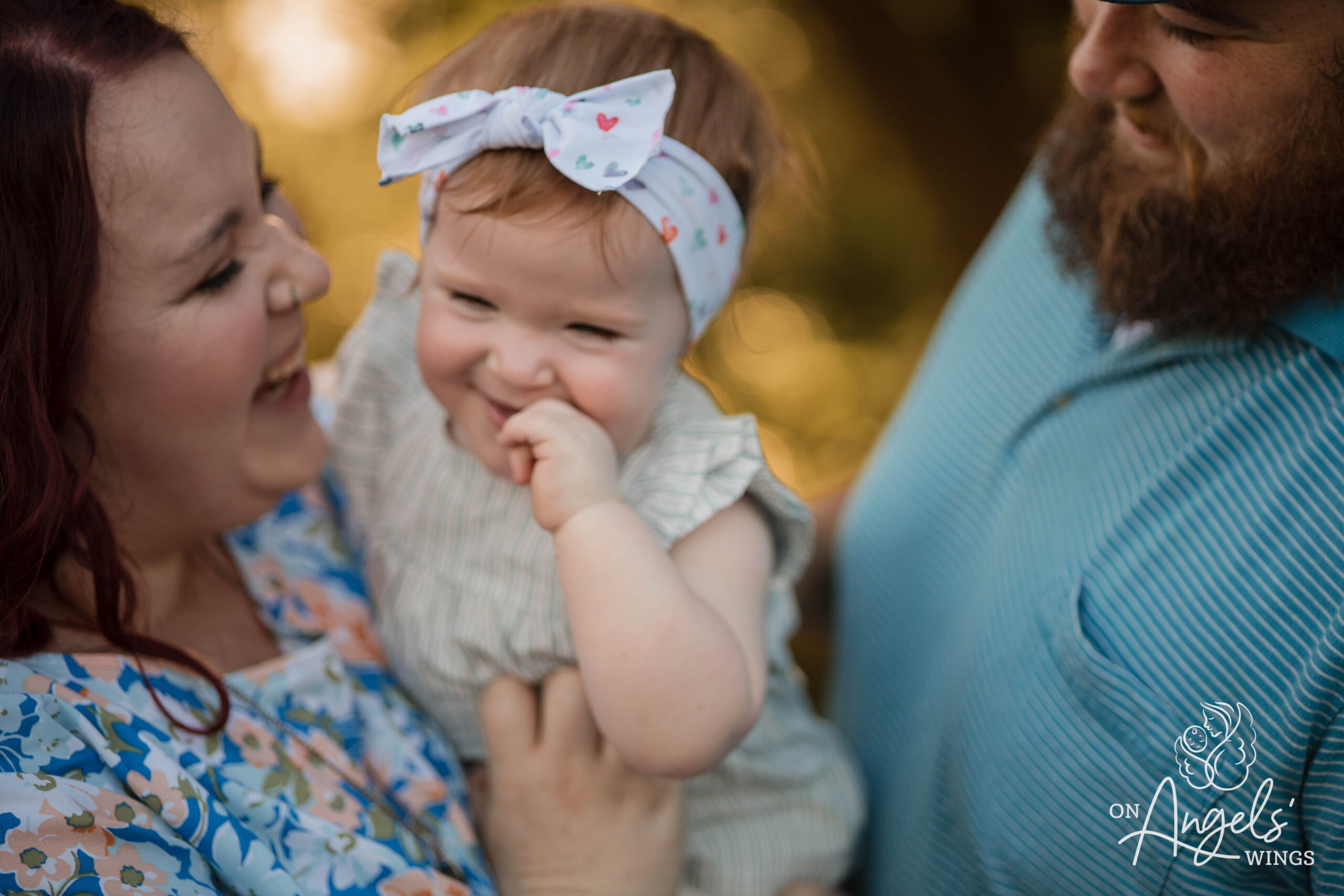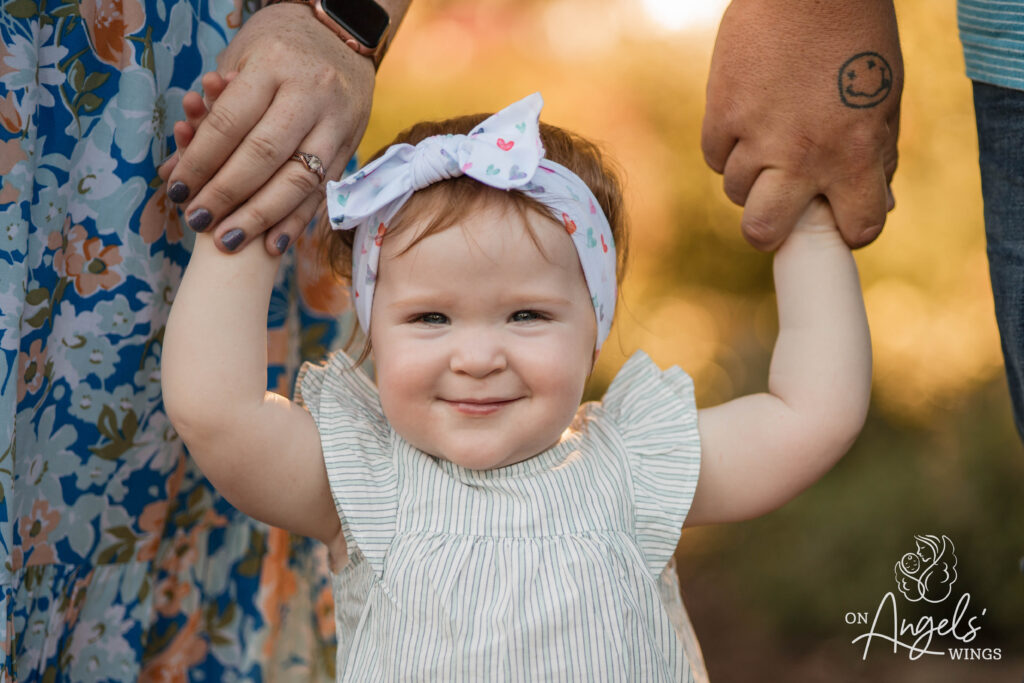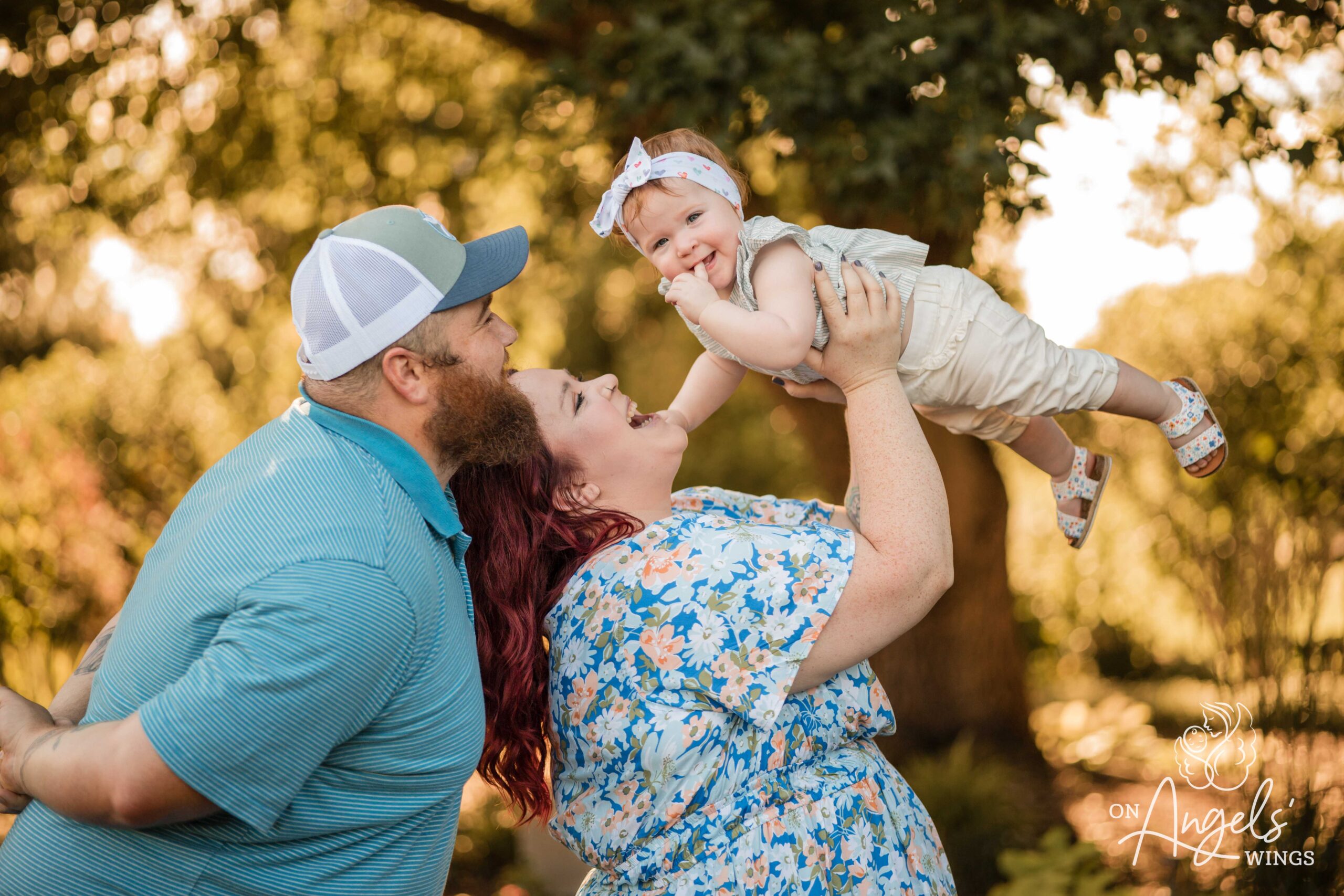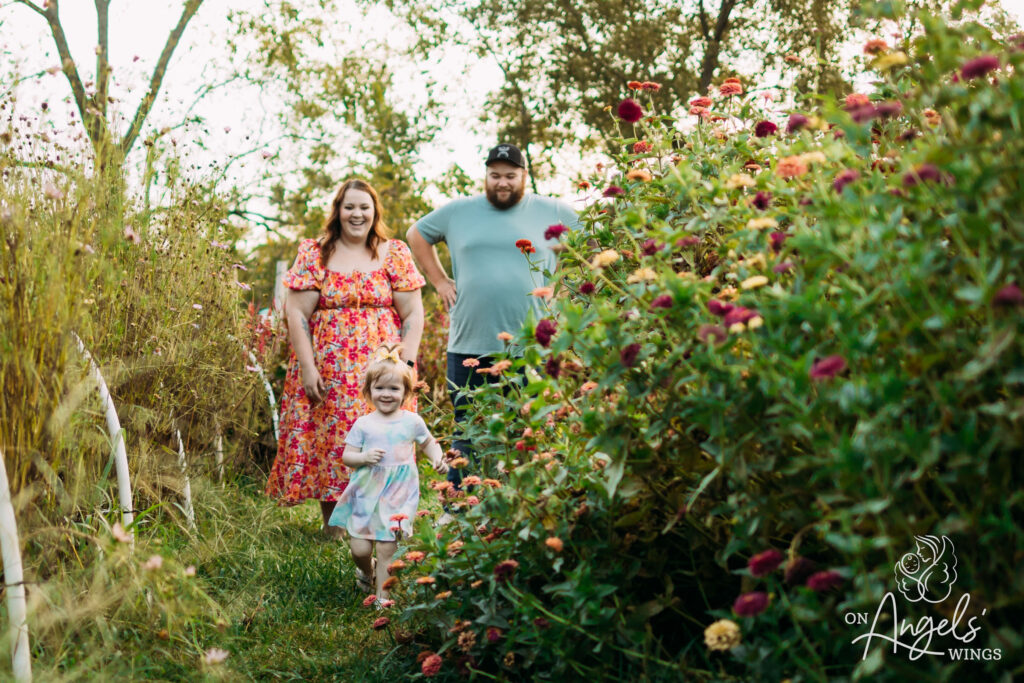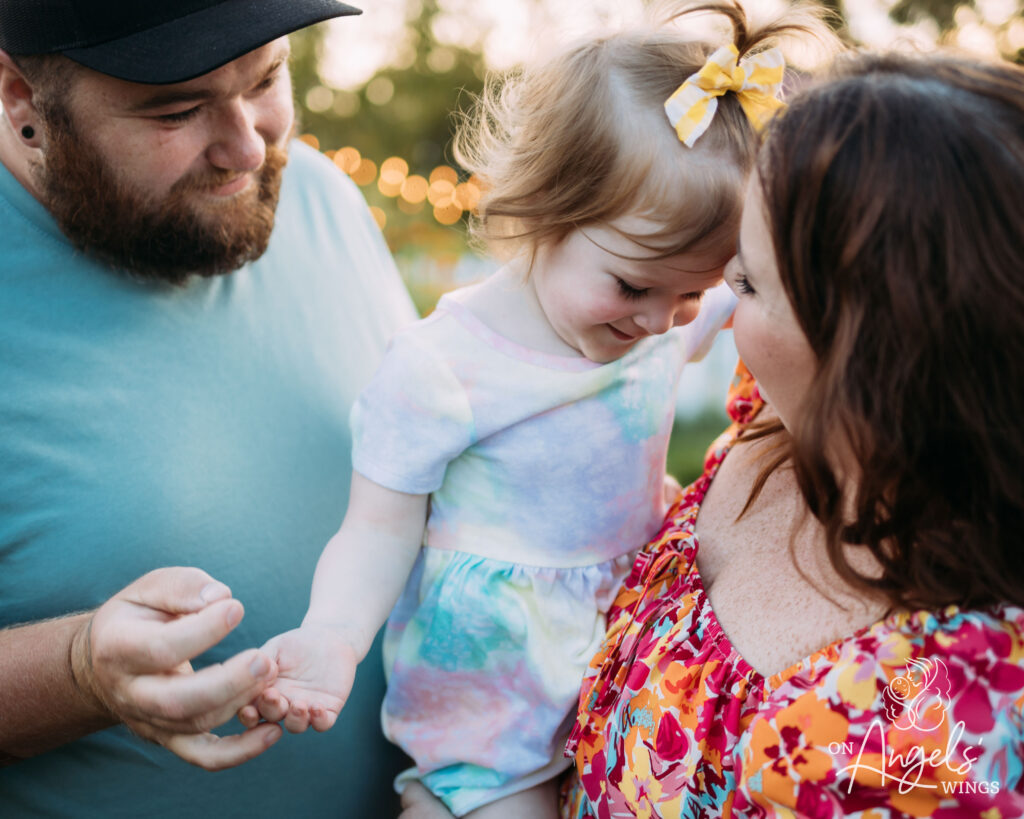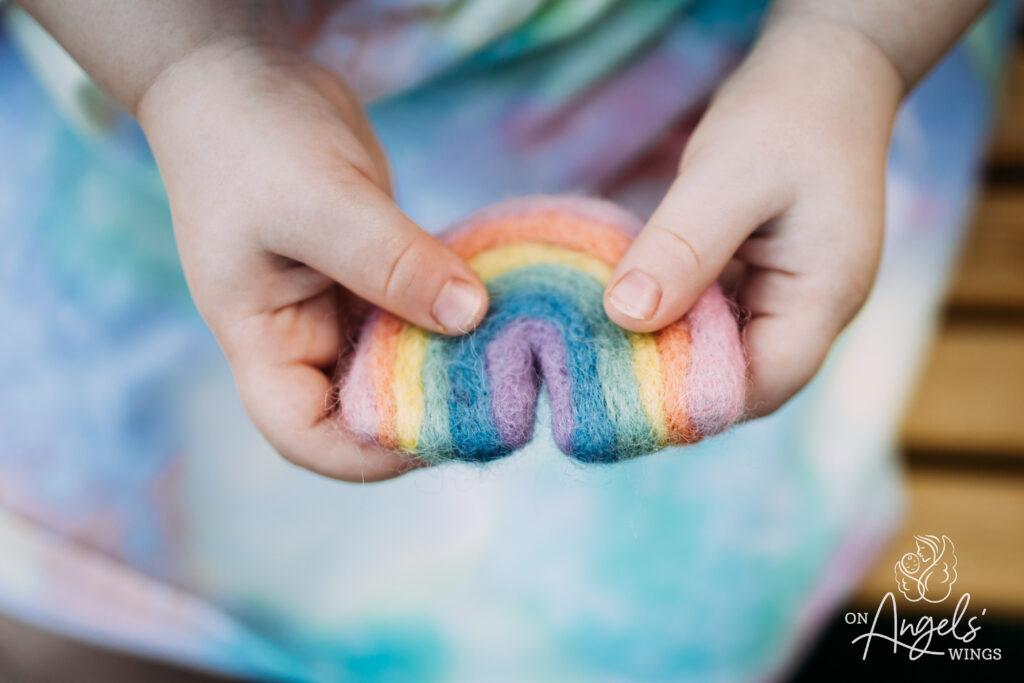By Brandalyn Zabel
Mommy to Oliver, stillborn in May 2020
And rainbow baby, Kinzlee, born in 2022
We struggled with infertility and were under the care of a reproductive endocrinologist for 16 months before finally becoming pregnant with our first baby, Oliver.
After fighting so hard just to conceive, my mind was constantly running through all the possible outcomes. There was a lot of anxiety heading into each appointment, always worried something might go wrong. Fortunately, Oliver’s pregnancy progressed week after week with only mild hypertension to monitor. We were cautiously hopeful and closely watched—having weekly appointments with both my OB and a perinatal specialist.
But at 36 weeks, I woke up with severe complications and went to OBED. That’s when we were told: Oliver no longer had a heartbeat.
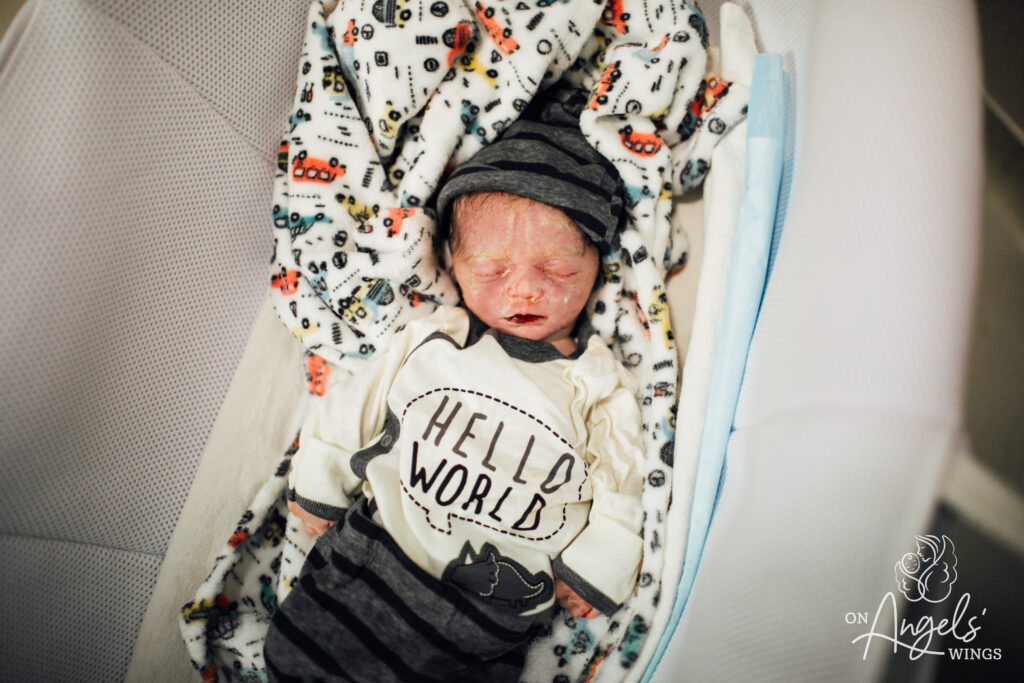
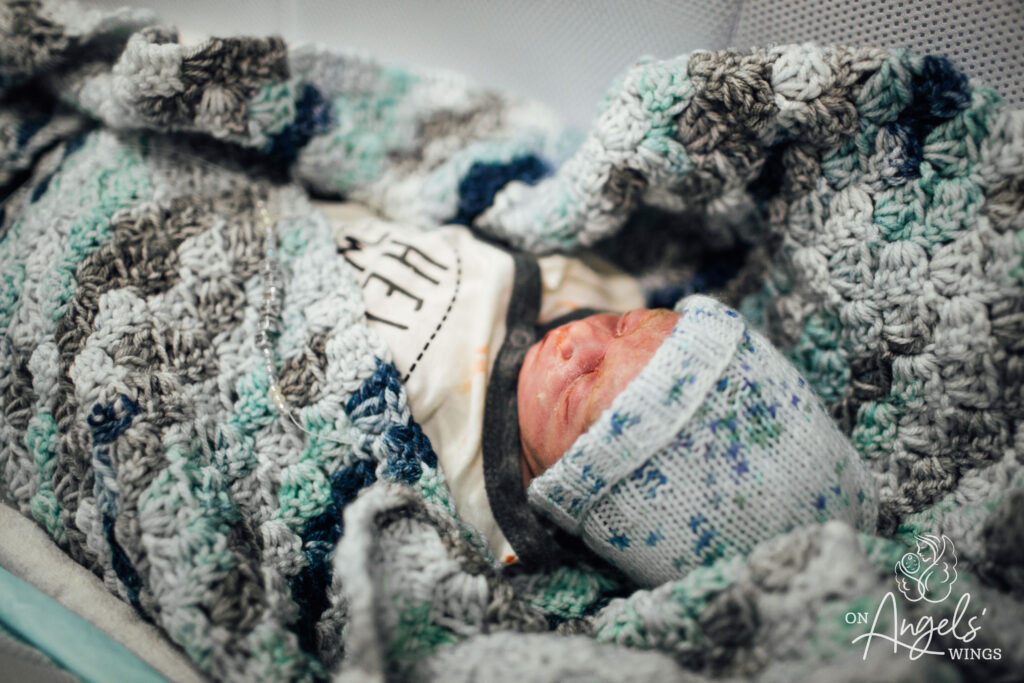
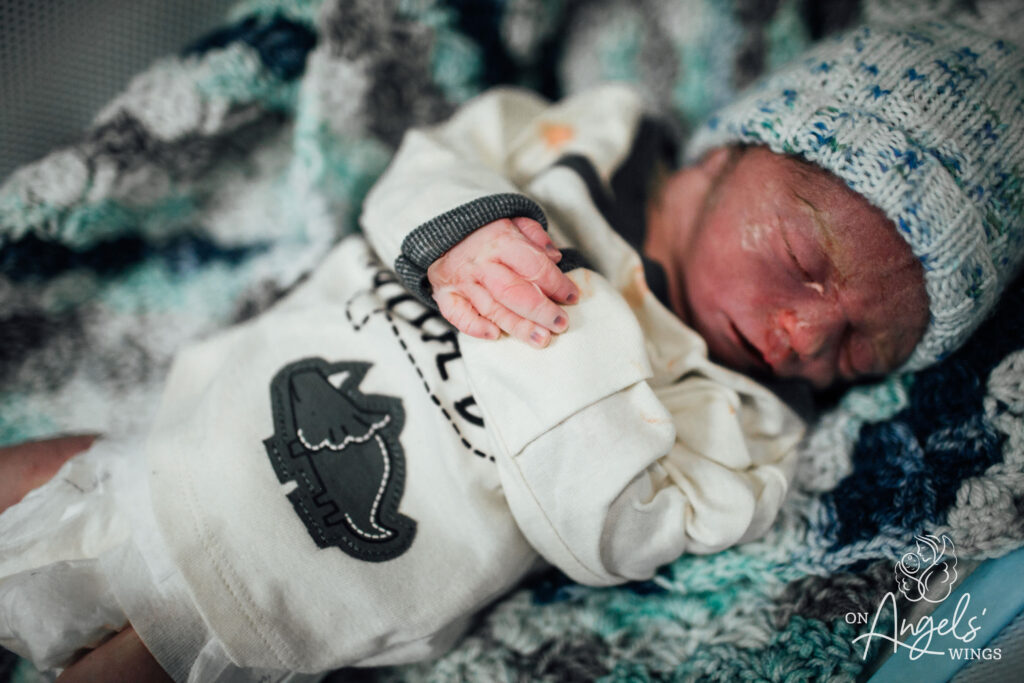
We had been preparing for a 37-week induction, but instead, I was admitted for an emergency induction at 36 weeks. My vitals were unstable, so there wasn’t time to process anything. This also happened just as COVID began to spread, and we weren’t allowed the physical support of our family. Initially, no one knew what had caused Oliver’s passing, but upon delivery, they discovered his placenta had completely abrupted—it was shredded. My vitals remained unstable due to severe preeclampsia, and I had to stay under additional monitoring following his birth.
The end of Oliver’s pregnancy marked the beginning of COVID times. Because of that, we missed out on maternity photos and other keepsakes. Without the pictures we received from On Angels’ Wings, we would only have the 20 or so photos that hospital staff took. The images we were given mean the absolute world to us—they’re all we have of our son.
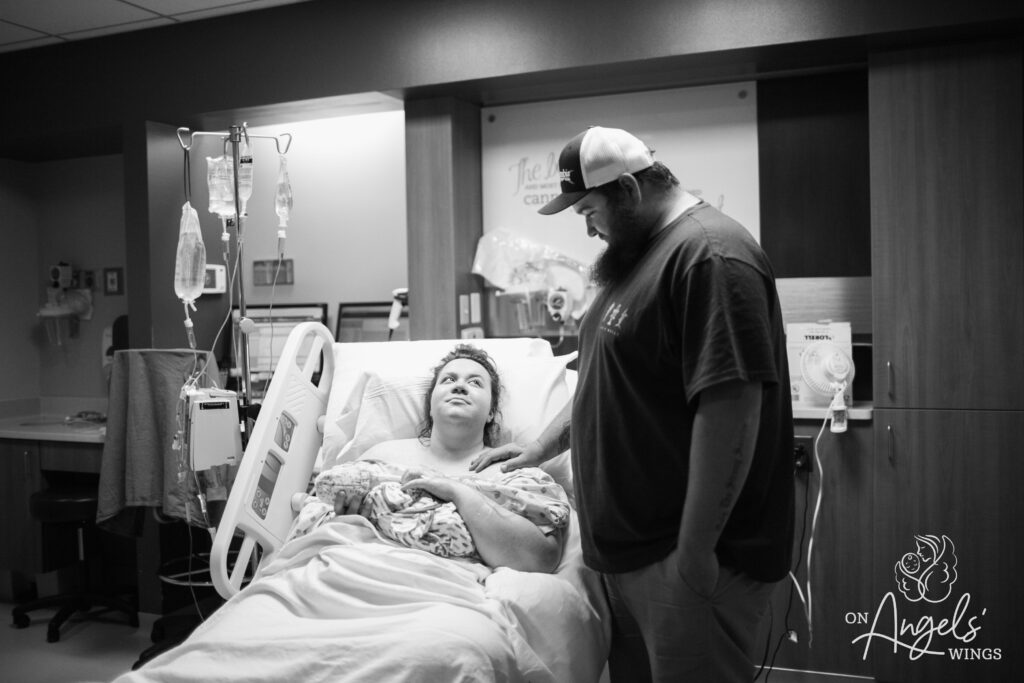
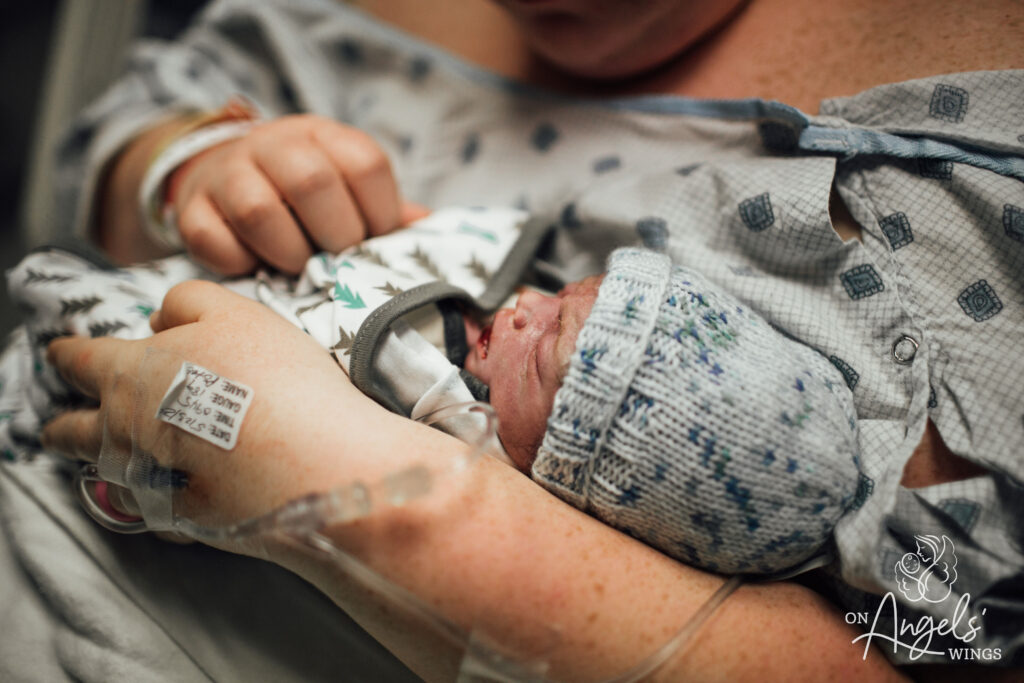
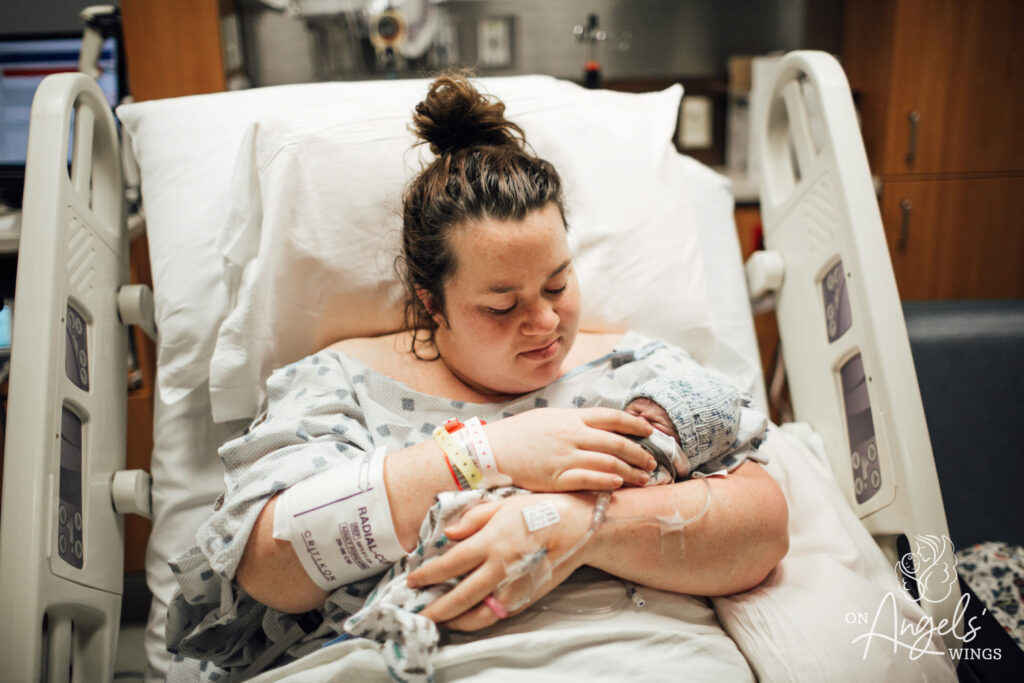

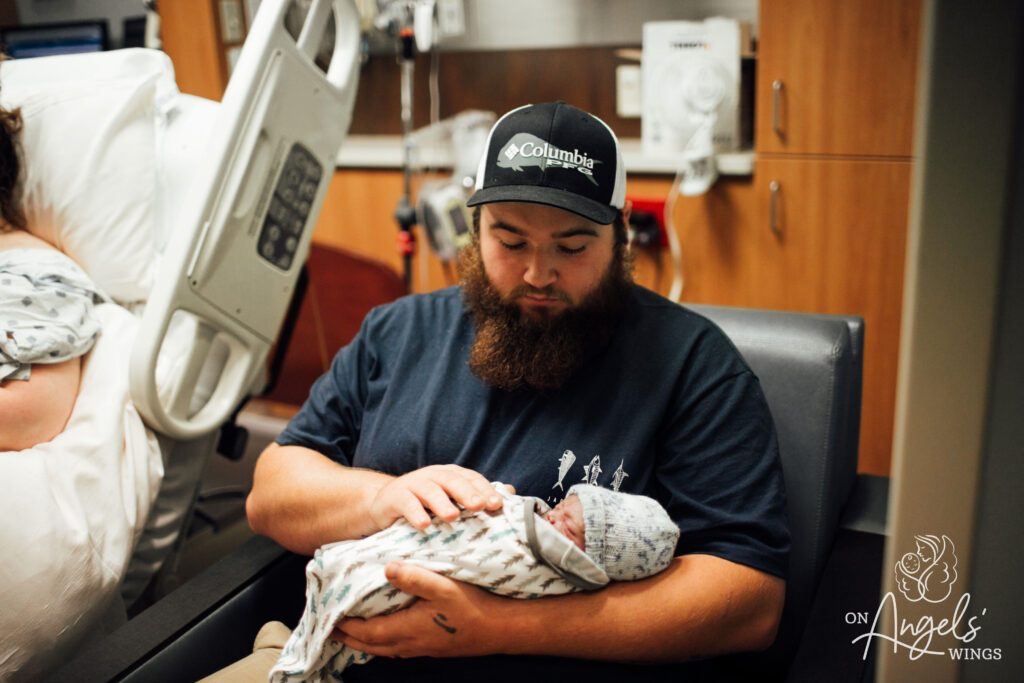
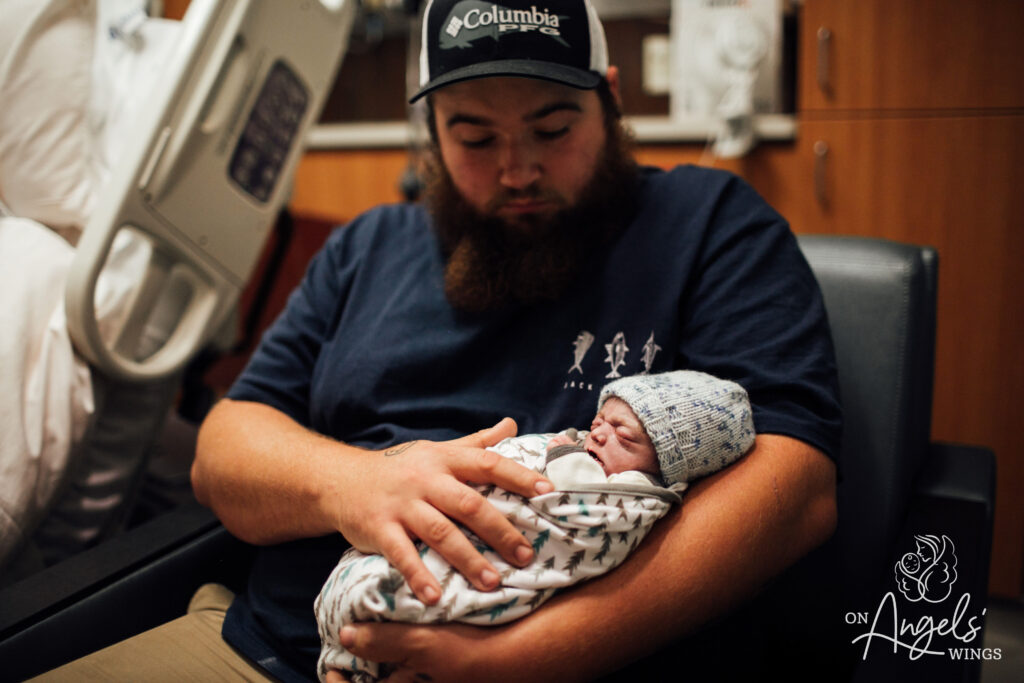
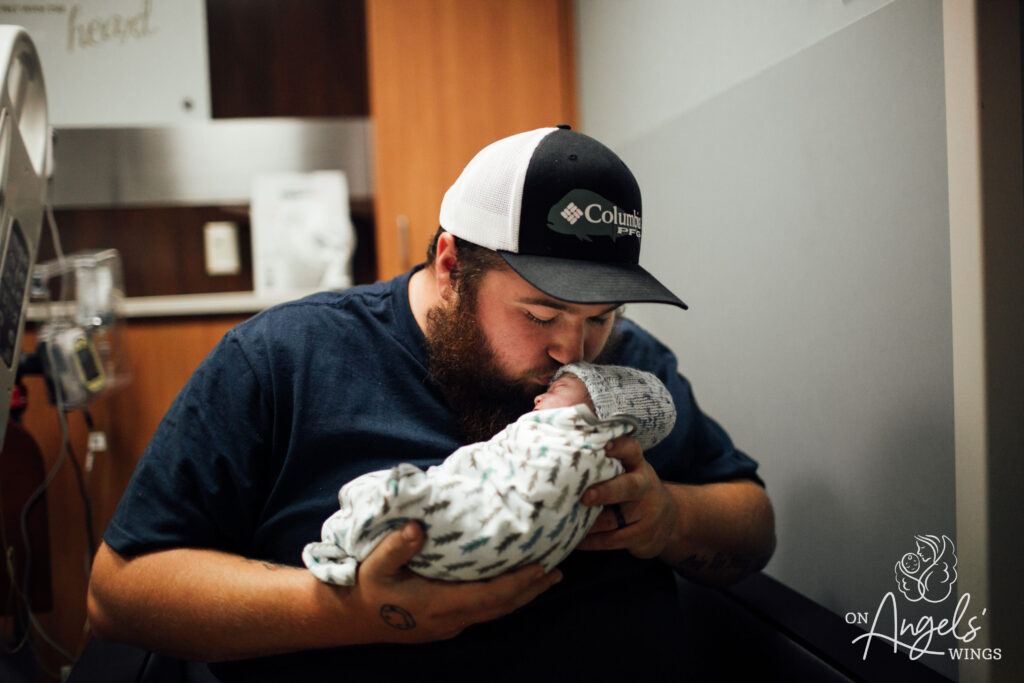
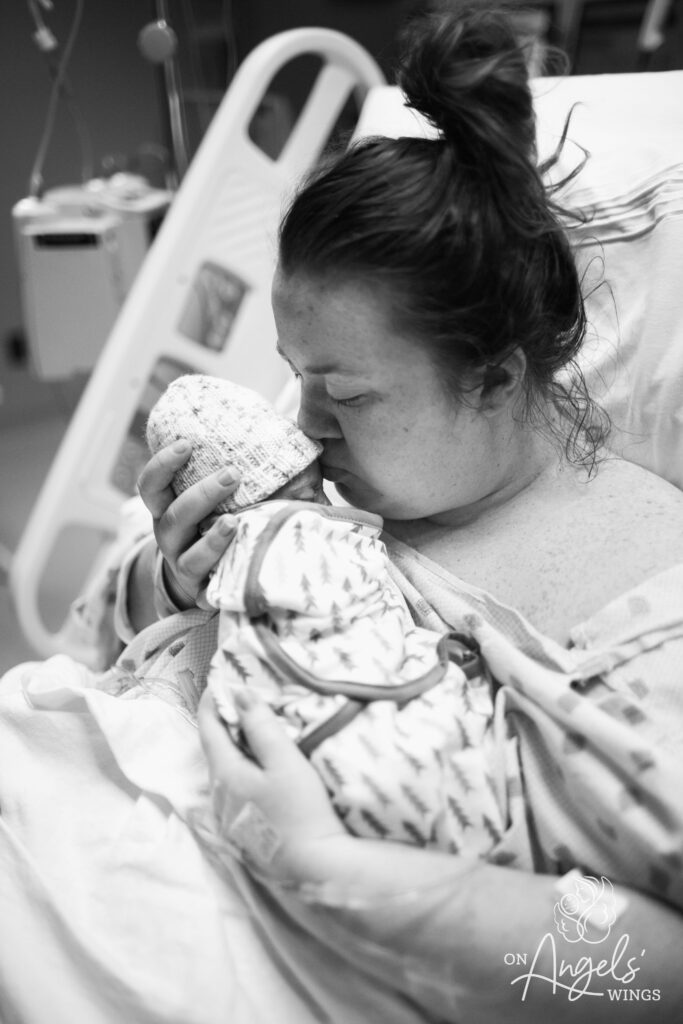
Shortly after losing Oliver, we experienced a miscarriage. Then we conceived our rainbow baby, Kinzlee.
With Kinzlee’s pregnancy, all we hoped for was to bring her home safe. But the trauma from losing Oliver lingered, and the risks remained high. I developed gestational diabetes, which caused polyhydramnios (excess fluid), and dealt with severe clotting affecting my lungs. At 28 weeks, I was hospitalized again—this time for decreased fetal movement. That’s when they discovered Kinzlee’s placenta was small and not providing her with optimal support. From that point forward, I was monitored three times a week by my high-risk specialist.


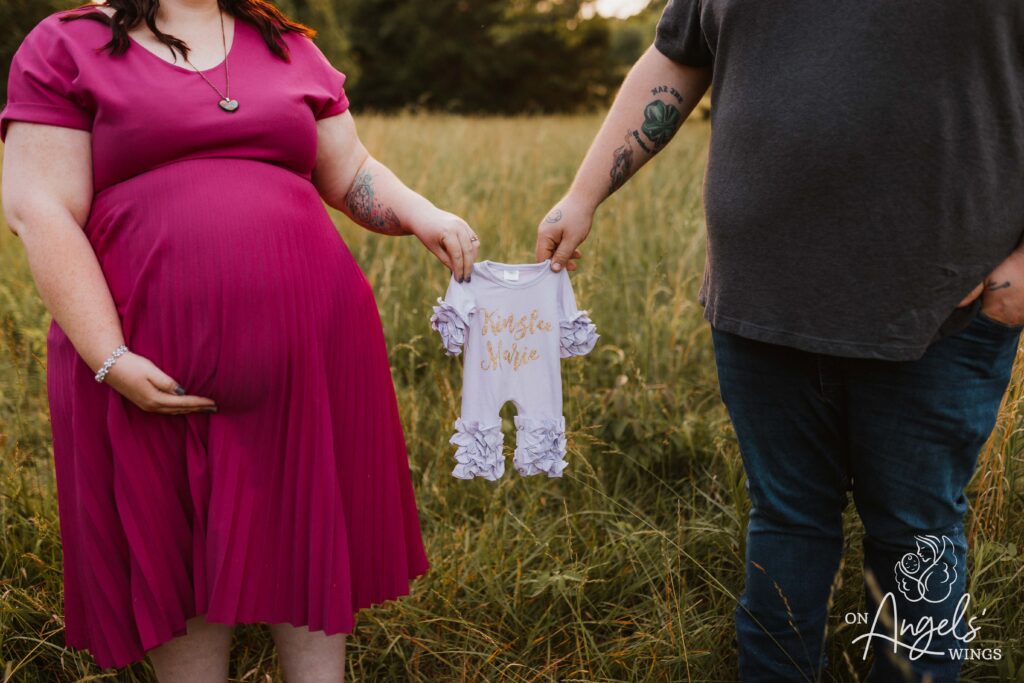
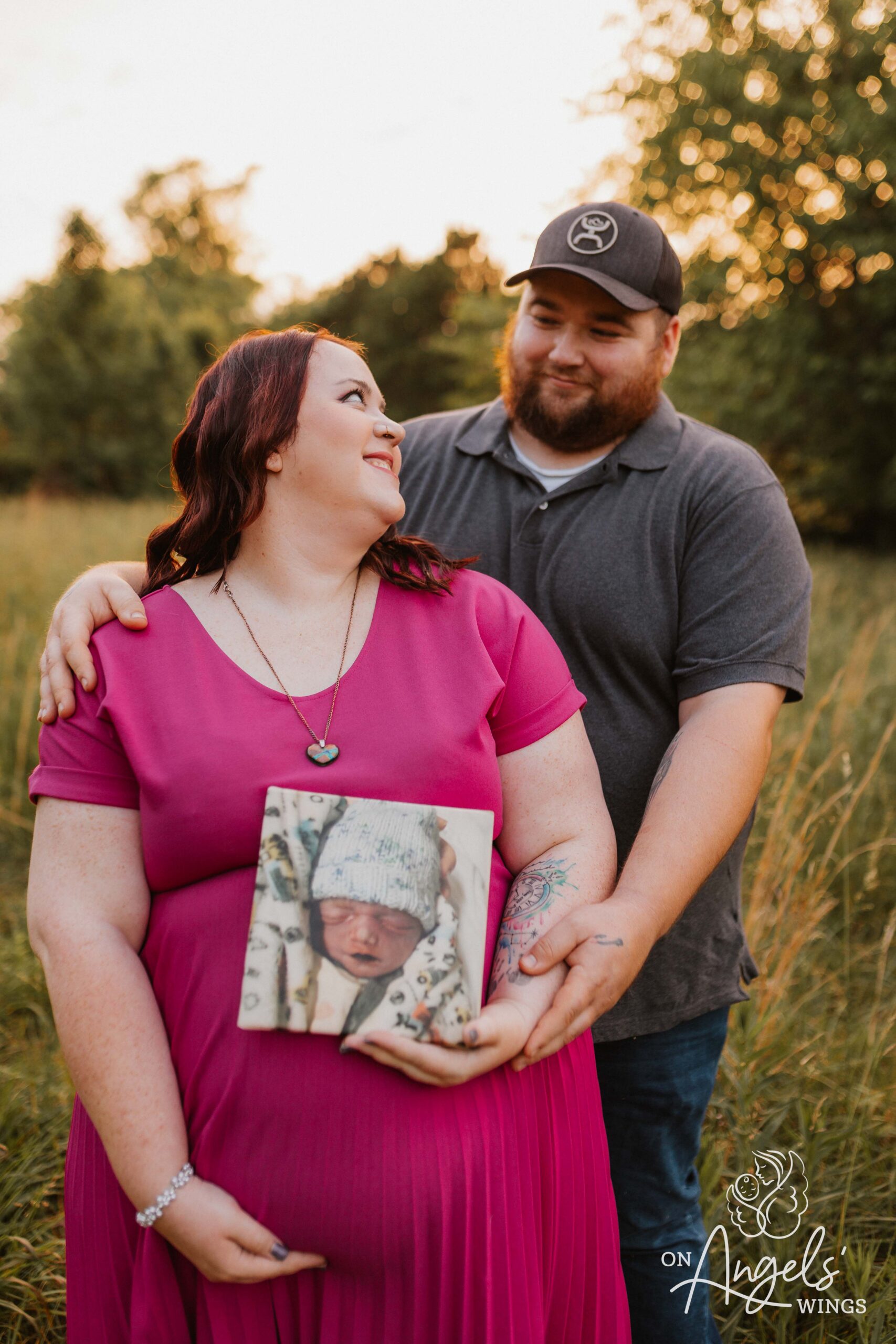
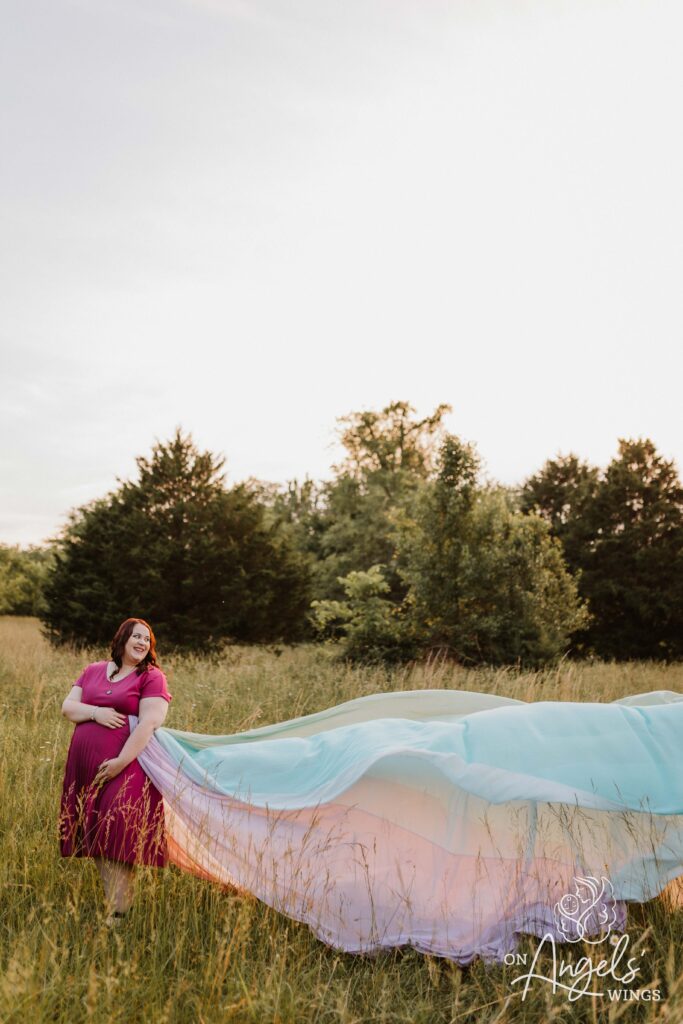


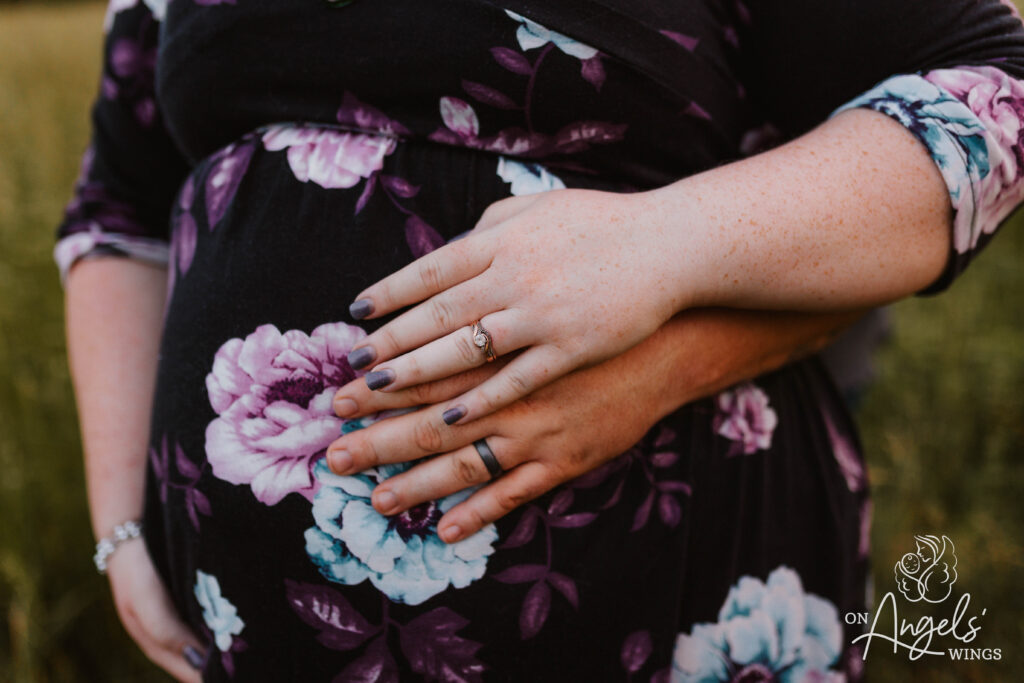
One week before my scheduled induction, I was admitted due to lack of movement again. The polyhydramnios had caused her to lie in an unstable position. On the morning of my planned C-section, they did a final check—and she had flipped into the head-down position. So we proceeded with induction.
About 24 hours in, Kinzlee wasn’t responding well to the Pitocin. Our OB had been watching the strips and wasn’t happy with how they were trending. The team rushed in and performed an amnioinfusion, introducing fluid into the uterus to relieve pressure on the umbilical cord. They told us we’d know within 15 minutes if it was working or if we’d need an emergency C-section.
Thankfully, she stabilized.
Kinzlee came pushing her way into the world while the doctor was still finishing getting gloved up. We couldn’t believe it.
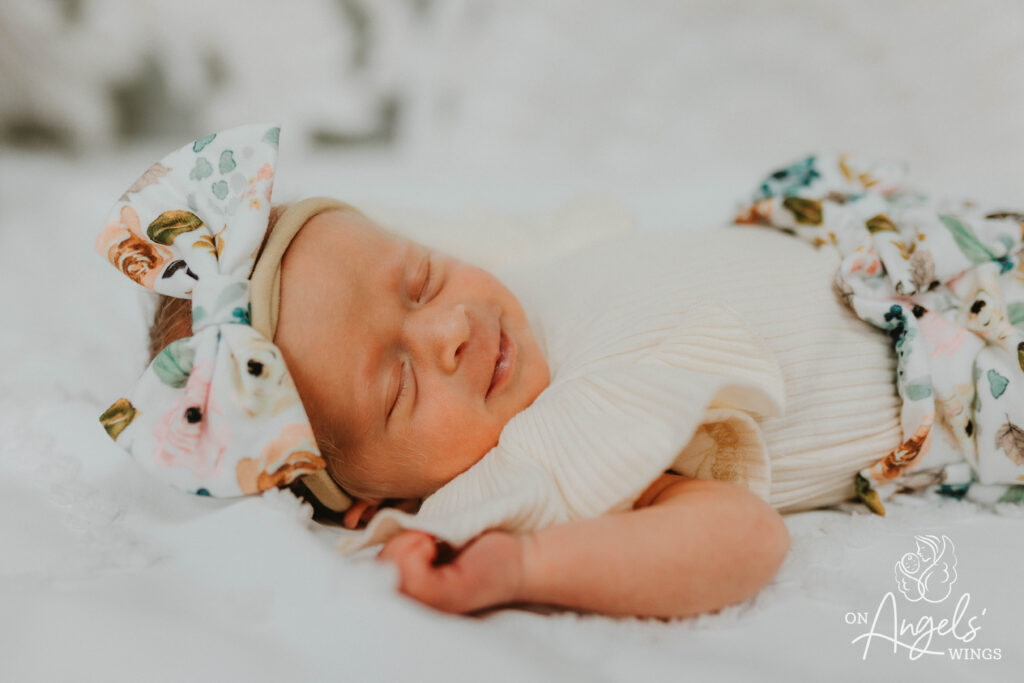
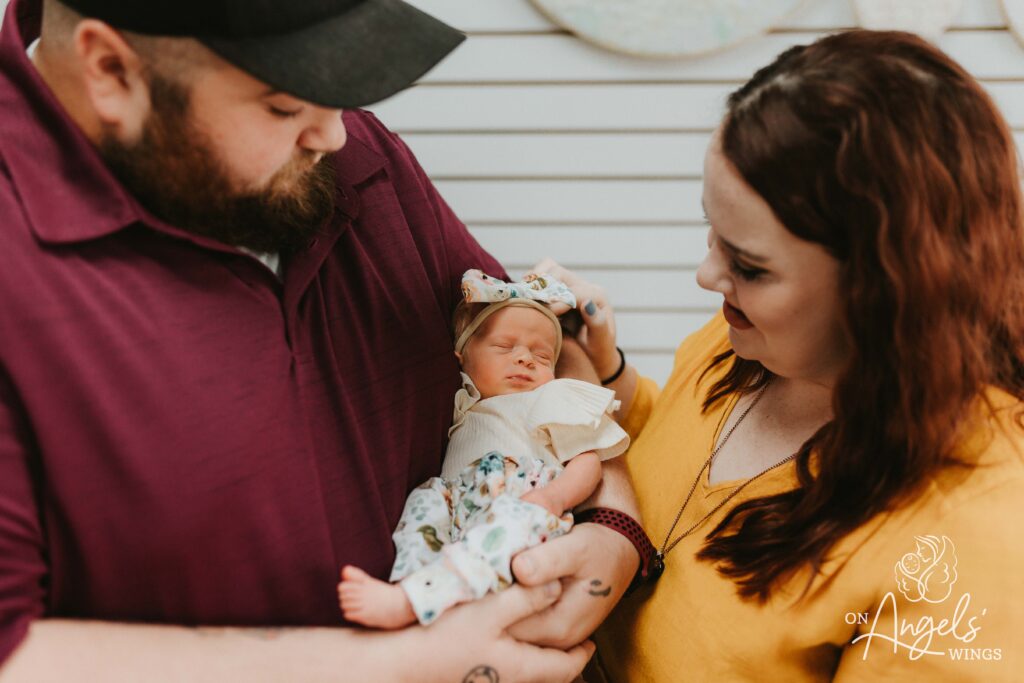
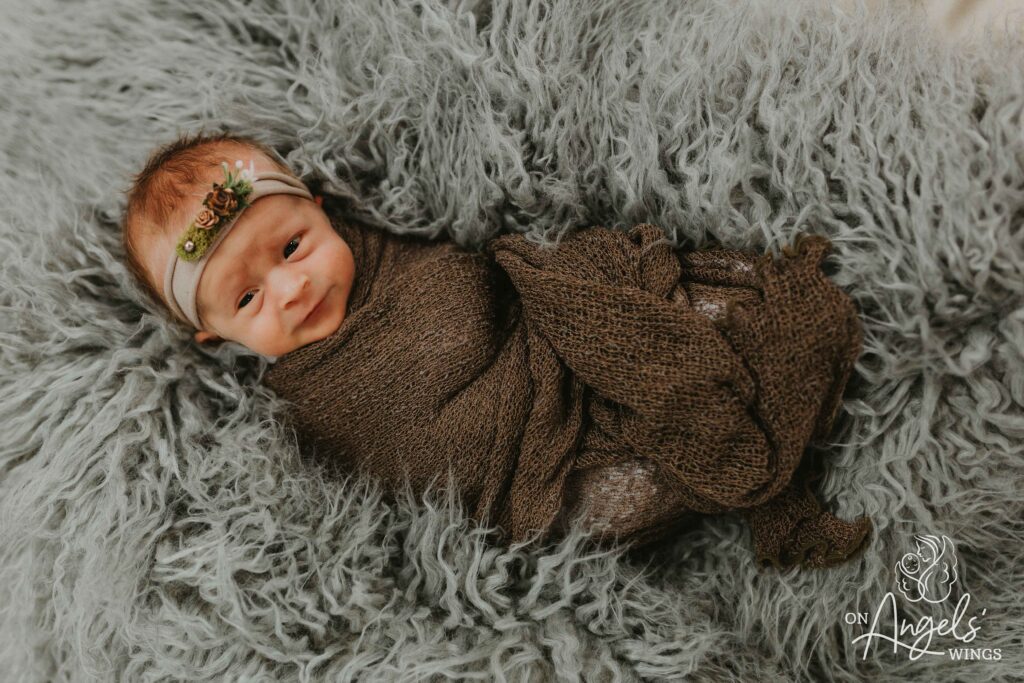
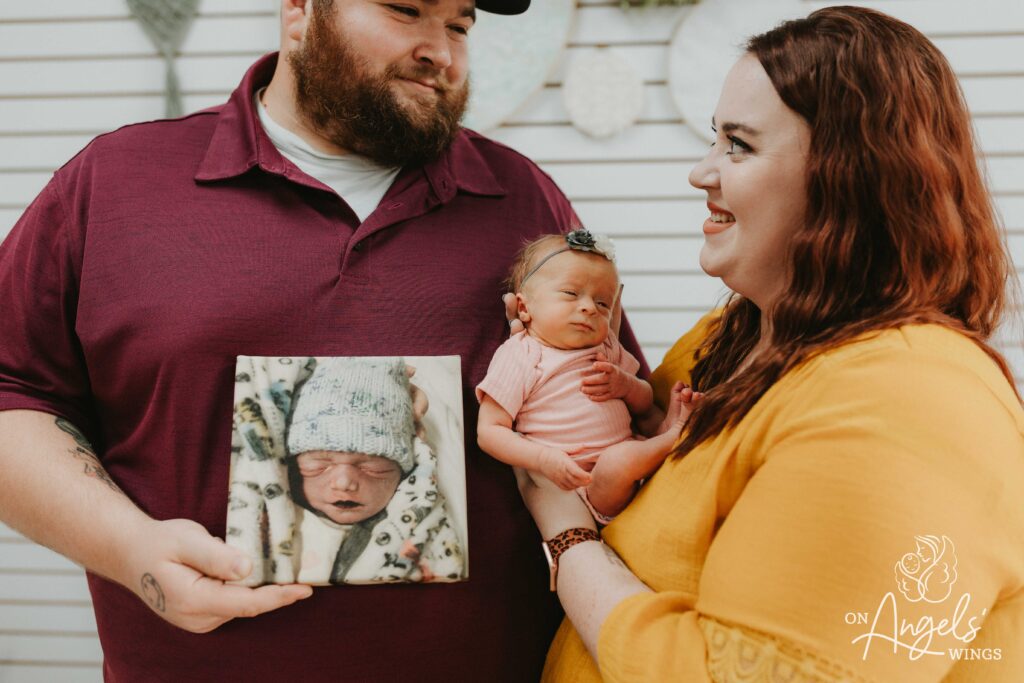
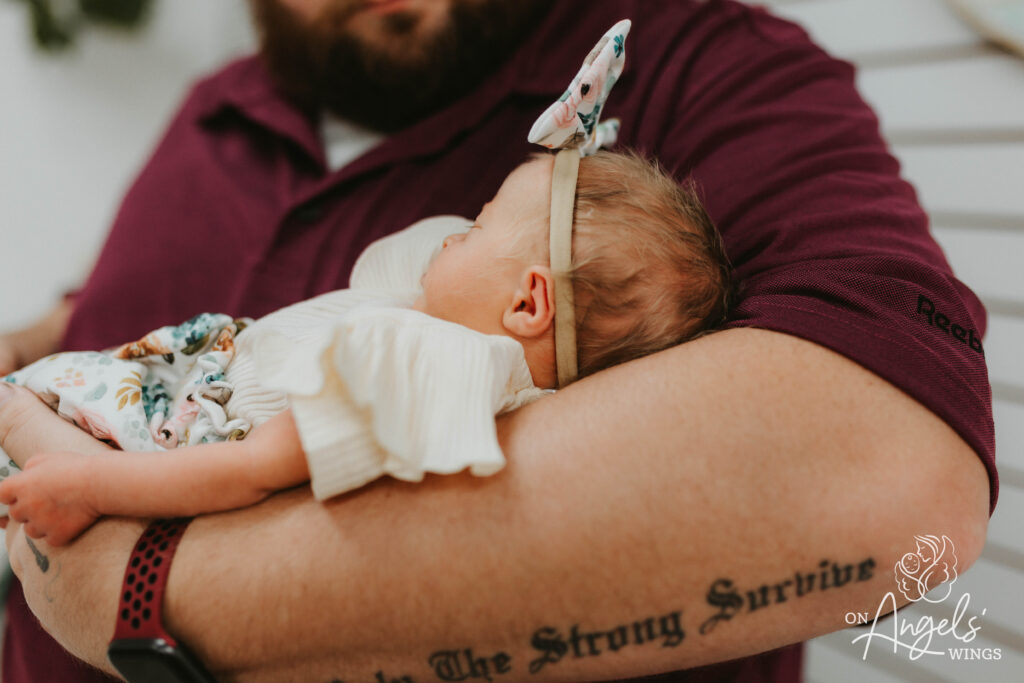
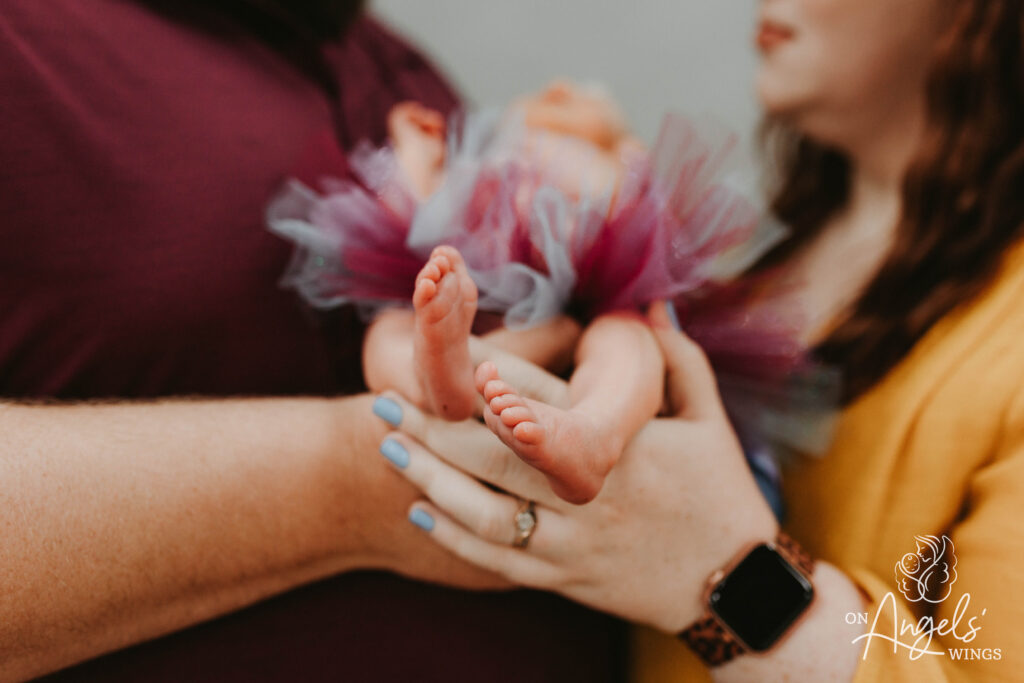
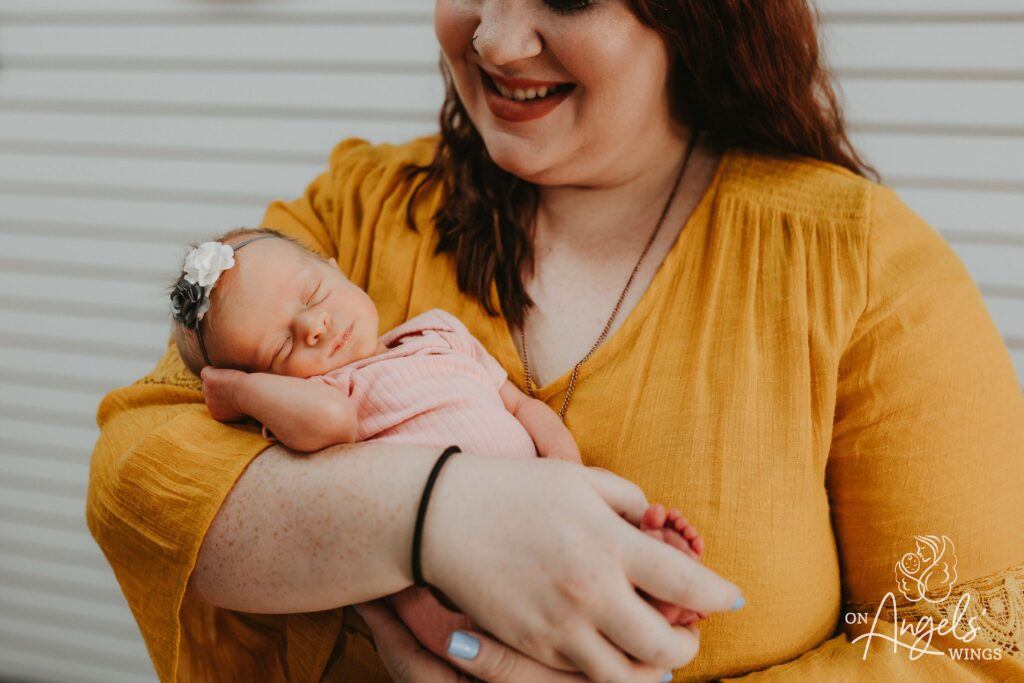
Now, we are savoring every moment with her. We know how unfair life can be. The trauma never fully goes away. Grief never disappears. But that makes us appreciate every second we’re given even more.
The photos we’ve received through On Angels’ Wings remind us just how important both of our children’s lives are—Oliver, who lives on in our hearts, and Kinzlee, who brings light into every day. The fact that OAW continues to capture Kinzlee’s milestones shows us that her life is important not only to us, but to those who’ve walked beside us.

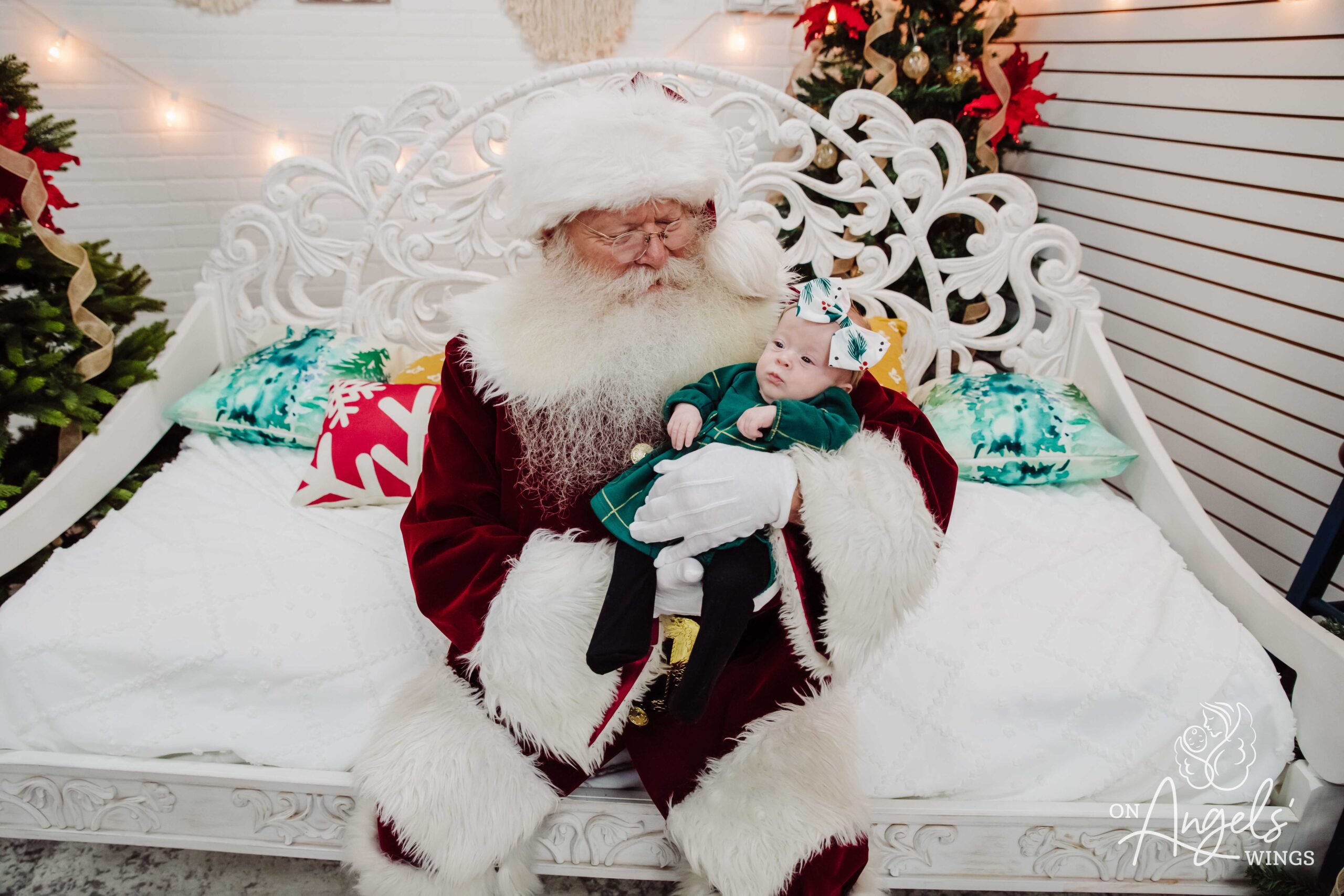
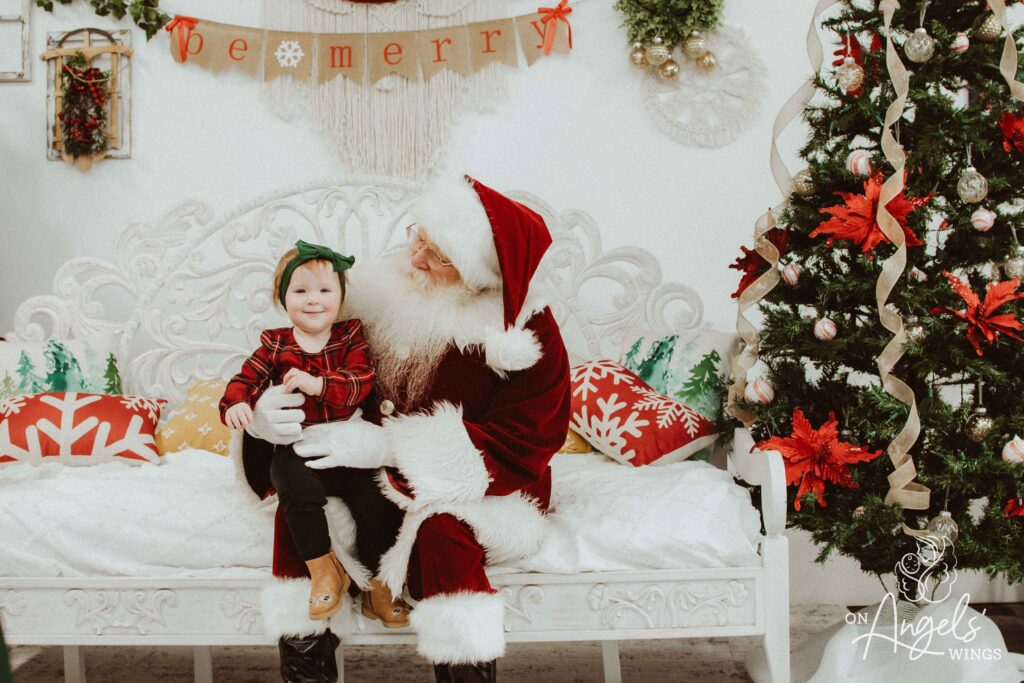
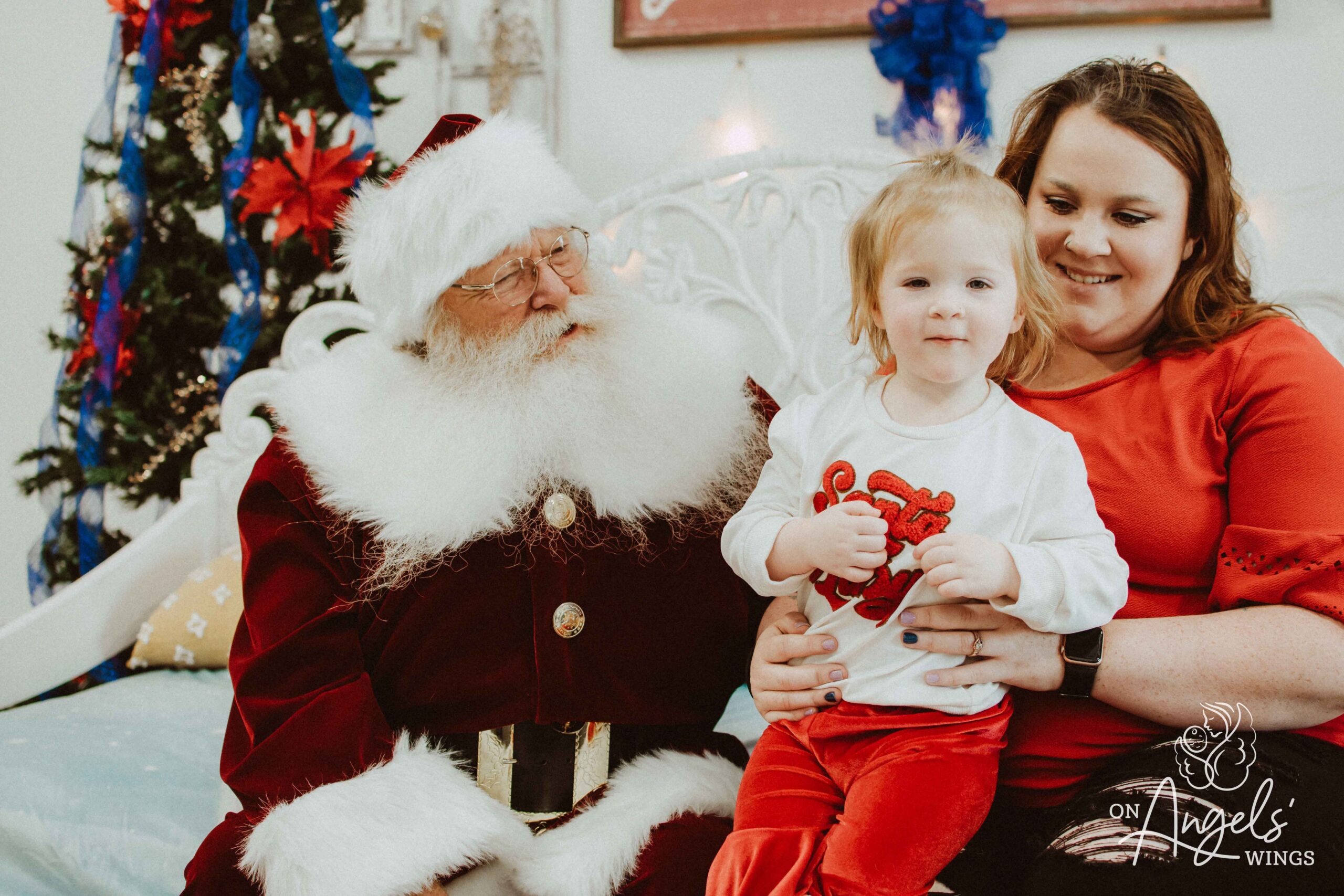
We’ve also been able to attend OAW events like the carnival and Cardinals Day. These are more than just fun days out—they’re a chance to spend time with people who have walked similar paths. People who know how much the little things matter.
The most important thing OAW offers is understanding. So many people think grief comes with a timeline, that at some point you just “move on.” But OAW knows healing isn’t linear—and that some things you never fully heal from.
I encourage anyone who qualifies for OAW services to apply. Being part of this community means connecting with people who truly understand. It’s a safe space to not be okay. You don’t have to put on a brave face—because OAW is there to hold you up when you can’t do it on your own.
